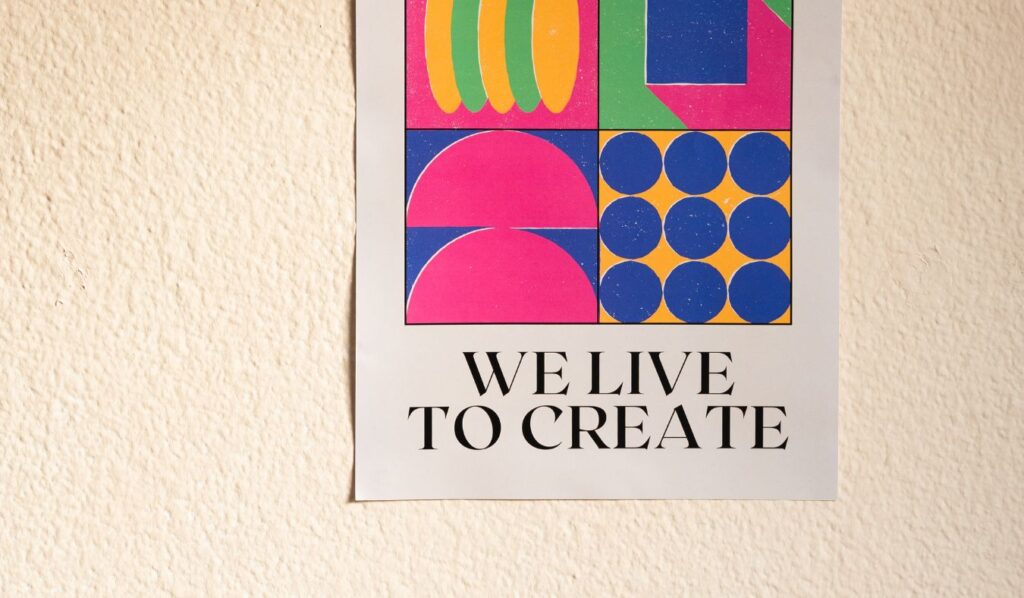Take a moment to think about the most iconic logos in the world – McDonald’s golden arches, the Nike swoosh, Apple’s bitten fruit. Their power lies not just in the design itself, but the consistency with which they’re presented to the world. Unfortunately, logo misuse is shockingly common, even among major brands.
- Sloppy Resizing: Stretched, fuzzy logos erode trust and look unprofessional.
- Color Chaos: Slight shifts in color across marketing materials make the brand feel haphazard and less memorable.
- Awkward Placement: Logo crammed in a corner or where it competes with other graphics creates visual tension.
Guidelines as Guardrails
Don’t think of logo brand guidelines as a creativity-killing rulebook. Instead, they act as guardrails, ensuring your carefully crafted logo is always used to maximum effect. A well-designed guidelines document provides:
- Clarity: No more guesswork about correct colors, spacing, etc. A quick reference saves everyone time.
- Consistency: Your brand looks unified and polished across websites, signage, and even the humble business card.
- Protection: Your logo investment is safeguarded against well-intentioned but misguided efforts by employees, freelancers, or vendors who aren’t fully versed in your brand identity.
Let’s dive into the essential components that make up effective logo brand guidelines!
1. Key Elements of Logo Brand Guidelines
Logo Variations
- The Master Blueprint: Present your primary logo in full color. This is the reference point for all other allowed variations.
- Black & White: Essential for single-color printing (newspapers, etc.) or when placed on busy backgrounds.
- Horizontal vs. Stacked: Prevents awkward squeezing – have layouts designed to fit various spaces.
- Icon Only (if applicable): For social media profile pics, favicons… Must be instantly recognizable on its own.
Minimum Size
- Pixels & Inches Matter: Clearly state the smallest your logo can go in both digital (pixels) and print (inches/cm) measurements.
- Why It’s Vital: Protects legibility across mediums. Fuzzy logo on a business card is worse than no logo.
Clear Space
- Give it Room to Breathe: Specify the minimum amount of empty space required on all sides of the logo.
- No Cramped Logos: Prevents it from being overwhelmed by headlines, photos, or other design elements.
Approved Colors
- Precision is Key: Provide the exact color values in:
- CMYK (for print)
- RGB (for screens)
- Hex Codes (for web)
- Background Impact: Designate a shortlist of background colors that DO and DON’T work well with your logo.
Typography
- The Perfect Pairing: Define the primary and secondary fonts used in conjunction with your logo.
- Brand Voice Alignment: Is it bold and modern? Classic serif? Fonts reinforce overall brand personality.
- Hierarchy Matters: Specify heading sizes, body copy font, etc. Ensures cohesion across marketing materials.
Unacceptable Uses : The “Don’t” List: Visually show the most common mistakes people make with your logo.
- Stretching or distorting the proportions
- Adding cheesy effects (drop shadows, bevels)
- Placing it on a background that makes it unreadable
- Changing the colors “just because”
2. Beyond the Basics (Optional Additions)
These sections take your guidelines from a mere rulebook to a tool that helps anyone using your logo truly understand the why behind the rules.
Brand Voice & Tone
- How does your logo visually fit into your larger brand personality? Brief descriptors are helpful (modern, approachable, sustainable, etc.).
- Prevents jarring mismatches, like a playful logo used in a stiffly formal document.
Logo in Context
- Mockups are POWERFUL! Show your logo applied well to:
- Website header
- Product Packaging
- Business cards
- Signage (building, store window, etc.)
- Inspires those using it and reinforces how it’s meant to be integrated, not slapped on haphazardly.
Specialized Uses
- Does your logo get embroidered on uniforms? Turned into a 3D sign? Have specific manufacturing needs?
- A dedicated section covers these:
- Acceptable thread colors for embroidery
- Material specifications for signage
- Any limitations based on production methods
- Saves headaches and costly re-dos due to your logo not being suited for a specific application.
When to Include the Extras
- Larger Companies: The more people touching your brand, the more guidance they need.
- Complex Branding: If you have sub-brands, product lines, etc., extra clarity keeps things unified.
- Physical Products: Guidelines help manufacturers get your logo right on tangible goods.
3. Creating Your Guidelines
Building a logo brand guidelines document doesn’t require a design degree! Choose methods that align with your skills and the complexity of your brand needs.
Template Resources : These provide structure so you’re not starting from a blank page:
- GraphicRiver or Creative Market (often have the most visually polished template designs)
- Free options exist, but vary greatly in quality – be discerning if budget is a concern.
Software Options : Ideal for brands with straightforward logo usage needs.
- Microsoft Word
- Google Docs (allows for easy collaboration and sharing)
Design-Focused: Offers more layout flexibility for complex guidelines or those incorporating many mockups and visuals.
- Canva (user-friendly, good for visually showcasing examples)
- Adobe InDesign (the professional standard, but has a steeper learning curve)
Distribution: Accessibility is Key
- Shared Drives: Good for internal teams. Ensure the file is always the latest version to avoid confusion.
- Cloud Storage: Dropbox, Google Drive, etc. Allows access for external vendors (web designers, printers).
- Brand Portals: Larger organizations may invest in sophisticated portals where all assets (logos, fonts, etc.) live.
Additional Tips:
- Simple is Better: Don’t overcomplicate your guidelines with design jargon – anyone should understand them.
- Update as Needed: Your brand may evolve, requiring additions to the guidelines document over time.
- PDF Format: For sharing, lock it as a PDF to prevent accidental edits that could cause confusion.
4. When to Outsource Guidelines Creation
Sometimes, it makes strategic and financial sense to enlist the help of a professional designer, especially when:
In Tandem with Logo Design:
- If you’re having your logo designed, ask the designer about a brand guidelines add-on package.
- Ensures everything is created simultaneously, maintaining a cohesive brand identity from the start.
Rebranding Overhaul
- Updating an outdated logo? Pair it with the creation of your first formal brand guidelines.
- Signals to both employees and customers that you’re serious about a consistent brand experience.
Complex Needs
- Multiple logo variations (color, horizontal, stacked, etc.) for different uses?
- Strict sub-brands or a multi-tiered product line?
- A designer brings the experience to create a guidelines document that’s easy to navigate and addresses these nuances.
Benefits of Outsourcing
- Save Time: Designers are well-versed in the standard components and formatting of guidelines documents.
- Polish & Professionalism: They’ll ensure your guidelines LOOK as good as your logo, elevating your entire brand perception.
- Strategic Thinking: A designer can advise on potential logo usage pitfalls you might not anticipate on your own.
Important Note: Even if you don’t outsource the full creation, consider having a designer review your DIY guidelines document for any omissions or areas needing clarity.
Getting Started
Need Expert Help in creating comprehensive logo brand guidelines ensures long-term consistency. If you’d like guidance on building a full guidelines document or want to explore a complete branding package, Contact Brand Sewa.
Let’s work together to safeguard your brand’s visual identity!



